The Strike Industries SMC Bravo: The Poor Man’s Pistol PDW

I’ve been morbidly curious about the PDW/braced pistol format for quite a long time. What originally kicked off this curiosity was when I had a buddy of mine bring his B&T USW-A1 to a range day we had. The USW-A1, like the Strike SMC ( Strike Modular Chassis) Bravo, is essentially a platform that allows the user the same manual of arms as a typical 9mm sidearm, but with a more stable aiming thanks to an extendable brace or stock. The USW-A1 is probably my favorite example of this concept, but it's also quite pricey and requires the new owner to jump through a few additional NFA loopholes to properly acquire. This is where I think Strike Industries’ SMC Bravo steps in and takes a great service weapon concept, and adapts it to better fit the commercial and recreational shooter worlds. Today we’ll check out the SMC Bravo to give you guys a better idea of where this type of firearm might fit into your collection.
More from Strike Industries @ TFB:
The Strike Industries SMC Bravo: The Poor Man’s Pistol PDW
To fully appreciate what the SMC Bravo brings to the table, let’s take a quick look at the USW-A1 PDW again. This isn’t your average pistol. While the USW-A1 is still mostly just a semi-automatic, striker-fired, 9mm pistol, it also incorporates an integrated optic, spring-assisted folding stock, and special slide features that make it easier to operate with the extra bits added. The USW-A1 was designed specifically for law enforcement who needed the convenience of a sidearm combined with the added stability of a 9mm PCC.
However, while the USW-A1 is fantastic for close-quarters and suppressed shooting, it’s not exactly a modular system you can tweak and adapt for different situations, and it's also expensive as hell. That’s where the SMC Bravo instantly becomes a more attractive option at an all-in price of about $1,000 as opposed to the $3,000 you’d have to shell out for the USW-A1 - NFA stamps and all.
As mentioned before, the Strike SMC Bravo also allows you to modify and add customizations to the firearm that will fit you and your shooting habits better. The SMC Bravo is compatible with more calibers than just 9mm and with a wider variety of less expensive magazines, holsters, and can work with all sorts of different slide and barrel lengths, unlike the highly focused USW-A1.
Gun Legos - Not Gunsmithing
Some people might be put off by the idea of having so many different parts in order to put one of these together. However, the way Strike Industries has done things, they’ve made it pretty simple at the base level and have also given you plenty of room to make things more complicated if you’re after something super specific. All that being said, the easiest and best way to start is to have a SIG P320 and to purchase a Strike SMC Bravo.
The SMC Bravo is a non-firearm part so it can be shipped directly to your door. From there, all you’ll need to do to have a working SMC Bravo is to remove your SIG P320 FCU and install it inside of the Bravo. Once that’s done, you can then transfer your slide to the Bravo, and voila! You still have a pistol - but just one with much more room for attachments.
Strike sent along a couple of their magazine baseplates as well as their ambi side charging handle for the P320, Spare Magazine Holder, a standard Blast Shield, and of course one of their very affordable stabilizer braces. These last few accessories drive the cost up another $180 or so, and will also require you to do a bit more disassembly and assembly for the final product, but I think most of them are worth it if you’re looking for the PDW experience at the range.
That being said, if you’re comfortable with punching out a few pins and using a screwdriver, this should be closer to assembling Legos than real gunsmithing. If you’re uncertain of how things go together yourself, Strike Industries always has very comprehensive and detailed installation videos for all of their products, and handy QR codes are always included with their parts so you can have the link right there when you go to install the part.
Performance On The Range
One of the big things that sets the USW-A1 apart from a regular pistol is its ability to give you way better accuracy results while still maintaining a relatively compact profile. It’s a tool for those who need fast, controlled shots when a pistol is the only thing that they have on them. For us civilians, the excuses that we need to make for ourselves to carry around a rig like this are probably much more complex, but at the end of the day, I’m mostly into the SMC Bravo for how much fun it is to shoot at the range.
The SIG M17 that I used as part of this build already comes with a ROMEO-M17 optic, but to be completely honest, a taller optic would be a much more comfortable solution here. The similar Strike SMC Alpha accomplishes this with its extra tall optics mount, but the Bravo is still quite useable even with a very low-profile optic like the ROMEO-M17. The combination of the optic and the increased stability that the brace offers gives the shooter way better stability, effectively increasing your capability for precision to at least 100 yards. This is something that SMGs do very well, and your average semi-automatic service pistol doesn’t do well at all. The SMC Bravo kinda bridges the gap between the two platforms.
I personally found the addition of the blast shield and angled foregrip to be unnecessary and actually more cumbersome. The blast shield is supposed to protect any attached lights as well as your hands from being so close to the muzzle but I found that if I just adopted a grip like I would use on the USW-A1 (both hands on the grip), then I was still able to get good stability from the platform without the need to awkwardly crane my arm to grip the spare mag carrier combined with the flashlight. This stripped-down version with just the charging handle and the brace is how I have been running the SMC Bravo so far, and I think it's how I’ll continue to run it. The way I have it now gives it a more utilitarian feel akin to that of the USW-A1 but still has the option for a weapon light and the addition of a threaded barrel and suppressor down the road in which the blast shield might come in handy again.
A major downside to the SMC Bravo is the difficulty you’ll have in using it like a traditional pistol while utilizing a proper pistol grip technique. The addition of the brace and how close it is to the rest of the chassis in the folded position make it difficult to quickly and comfortably get your hands in position and ready to fire. The USW-A1 also suffers from this but to a much lesser degree.
To sum my range experience with it up - it’s an awfully fun way to burn some 9mm at the range and is also a great exploration of the “backpack gun” concept. One small gripe I do have about the current way it is set up is that the optic is so low that I have to adopt a very low cheek weld to get a proper sight picture. This inevitably results in my nose getting tapped every time I fire the gun when I have a tight grip on the platform. It’s not enough to hurt but it can be annoying when you’re not expecting it.
Final Thoughts: As Close As It Gets
When you compare the USW-A1 PDW to the SMC Bravo, you’re looking at two platforms that each excel in their own right. However, at the end of the day, I really like the Strike SMC Bravo because it's way more modular and adaptable than the laser-focused B&T USW-A1. Toying and tinkering with guns is almost an addition for me as I like to see if I can make things just a tiny bit better with the addition of this or that. Maybe it’s just an excuse to get out to the range more and shoot but the process of customizing your firearm is quite enjoyable for me, and I think we have Strike Industries in large part to thank for the sheer amount of aftermarket parts and customizations that are now available for platforms like the P320 and so many others.
For just half of what a USW-A1 would cost me, I was able to put together something very close to it while still avoiding the annoying NFA paperwork. The Bravo also gives me the option to add my own optics, accessories, and parts to the mix which will eventually result in a truly unique build.
Strike Industries SMC Bravo Chassis for SIG SAUER P320
I’d like to hear if you guys have toyed around with the 9mm Crossover pistol concept or chassis build. If you’ve got experience with any of the Strike Industries Modular Chassis let us know what you think of them down in the comments!
We are committed to finding, researching, and recommending the best products. We earn commissions from purchases you make using the retail links in our product reviews. Learn more about how this works.

Reloader SCSA Competitor Certified Pilot Currently able to pass himself off as the second cousin twice removed of Joe Flanigan. Instagram: https://www.instagram.com/ballisticaviation/
More by Luke C.
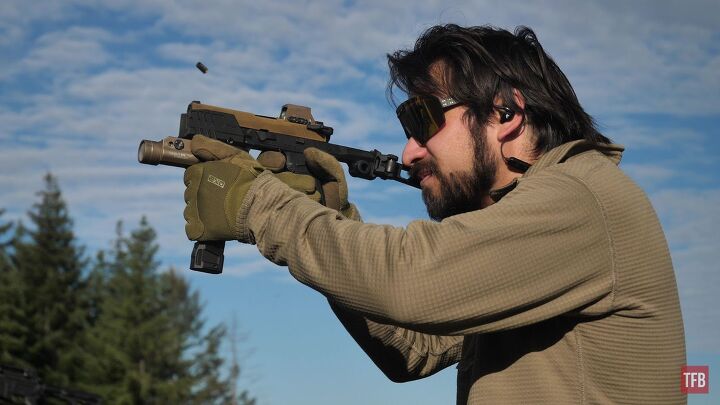

















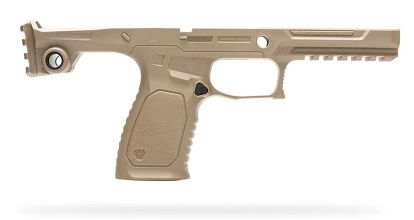
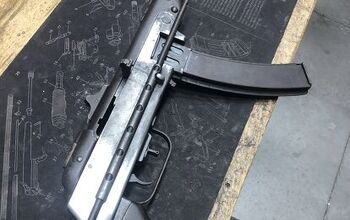
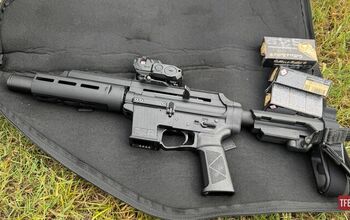
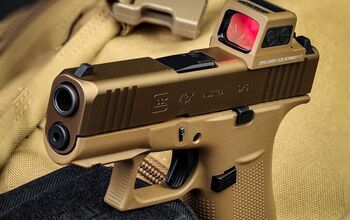
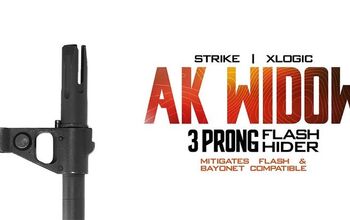

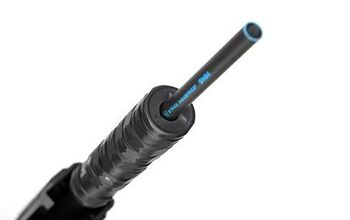
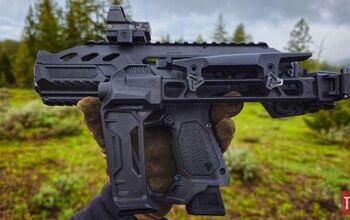

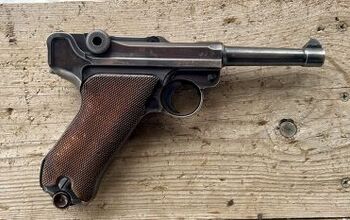


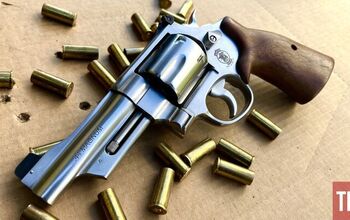





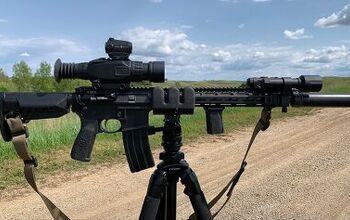
Comments
Join the conversation
With all the uncommanded firings of the Sig P320 I'm not sure this is the way I want to go. If they were to offer the same thing for the fire control unit from the Springfield Echelon, then I would be interested.
I have a USW-G, a Recover Tactical 20-20 and the SMC-Bravo, the SMC is by far my fav! Sans blast shield and magazine holder it can be fitted i to an IWB holster even with a folding stock/brace attached. Want to turn a 320 into a 200m+ gun this can do it with a 4.7" slide barrel. The flexibility is great.